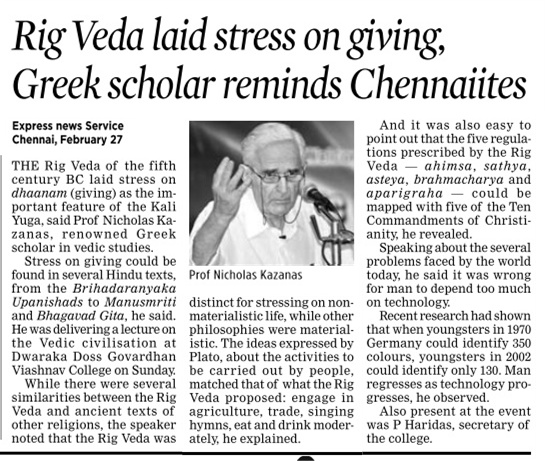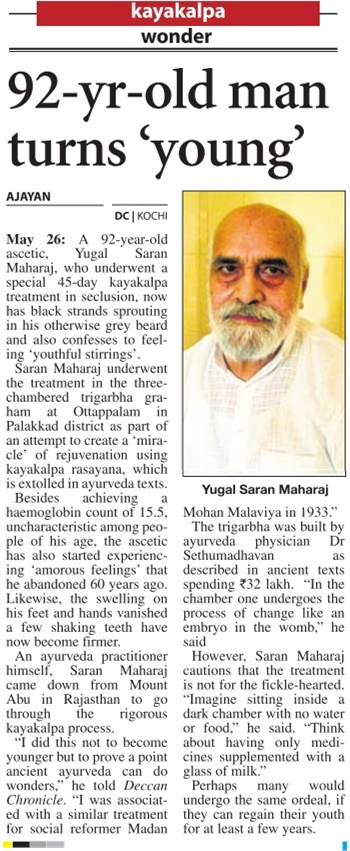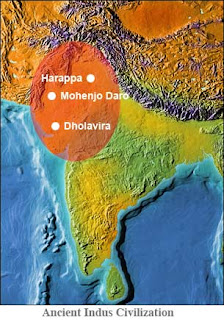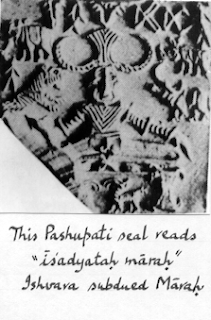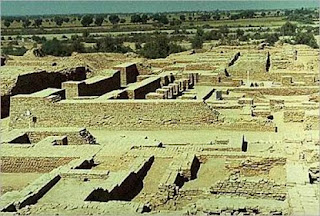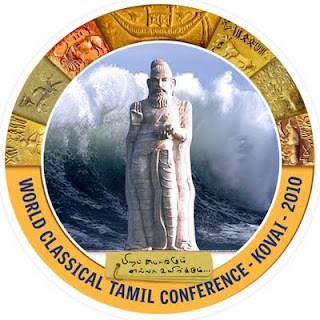
 கோ தானம் எதற்காக... அதன் மகிமைகள் என்ன?
கோ தானம் எதற்காக... அதன் மகிமைகள் என்ன?அரிசி மாவால் கோலமிடுவது புண்ணியம் என்பார்கள். ஆனால், அந்த அரிசி மாவை தின்ன வரும் எறும்புகள், நம்மையும் அறியாமல் காலில் மிதிபட்டு இறந்தால், பாபம் சேராதா?
 அனுதினமும் மருந்தடித்துக் கொசுக்களைக் கொன்று குவிக்கிறோம். அது பாபம் இல்லையா? அதேபோல், நடக்கும் போது நமது செருப்புகளுக்கு அடியில் அகப்பட்டு ஈ- எறும்பு போன்றவை மடிகின்றனவே?! வெண்டைக்காயை நறுக்கும் போது, சில நேரம் எதிர்பாராதவிதமாக உள்ளிருக்கும் புழுக்களும் அறுபட்டுவிடுமே! மாவரைக்கும்போதும், அம்மியில் அரைக்கும் வேளையிலும் மிகச்சிறிய உயிரினங்கள் குழவியில் அடிபட்டு மடிந்துபோகலாம்; வரட்டி, விறகுகளில் ஒளிந்திருக்கும் உயிரினங்கள், அடுப்பு நெருப்பில் மடிய நேரிடுகிறதே? தேனுக்காக தேனீக்களைத் தெரிந்தே அழிக்கிறோமே?! வரையறை இல்லாத அஹிம்சையை ஏற்றால், பல நன்மைகளை இழக்க நேரிடும். எறும்பு வராமல் இருக்க, தெரிந்தே நாம் எறும்புப் பொடியை உபயோகிப்போம்.
அனுதினமும் மருந்தடித்துக் கொசுக்களைக் கொன்று குவிக்கிறோம். அது பாபம் இல்லையா? அதேபோல், நடக்கும் போது நமது செருப்புகளுக்கு அடியில் அகப்பட்டு ஈ- எறும்பு போன்றவை மடிகின்றனவே?! வெண்டைக்காயை நறுக்கும் போது, சில நேரம் எதிர்பாராதவிதமாக உள்ளிருக்கும் புழுக்களும் அறுபட்டுவிடுமே! மாவரைக்கும்போதும், அம்மியில் அரைக்கும் வேளையிலும் மிகச்சிறிய உயிரினங்கள் குழவியில் அடிபட்டு மடிந்துபோகலாம்; வரட்டி, விறகுகளில் ஒளிந்திருக்கும் உயிரினங்கள், அடுப்பு நெருப்பில் மடிய நேரிடுகிறதே? தேனுக்காக தேனீக்களைத் தெரிந்தே அழிக்கிறோமே?! வரையறை இல்லாத அஹிம்சையை ஏற்றால், பல நன்மைகளை இழக்க நேரிடும். எறும்பு வராமல் இருக்க, தெரிந்தே நாம் எறும்புப் பொடியை உபயோகிப்போம்.விஞ்ஞானக் கண்டுபிடிப்புகளோ, 'லக்ஷ்மண ரேகையை’ (சாக்பீஸ் கோடு போன்று) அறிமுகம் செய்து, எறும்புகளை அழிக்க வழி சொல்கிறது.
உங்கள் கவனத்துக்கு ஒரு விஷயம்... எறும்புக்கு உணவளிப்பதற்காக மாக்கோலம் போடுவதில்லை. தரையைச் சுத்தம் செய்து, கோலம் போட்டு, சுப காரியங்களை நிறைவேற்றும்படி பரிந்துரைக்கிறது தர்மசாஸ்திரம் (ரங்க வல்யாத்யலம் கிருதம்). கோலம் போட்டு அதில் விளக்கை வைப்போம். கோலத்தின் மீது கும்பம் வைப்பதும் உண்டு. கோலமிட்டு அதன்மீது தட்டு வைத்து, விருந்தினரின் கால்களை அலம்பிப் பணிவிடை செய்வோம். அக்னி குண்டத்துக்குக் கோலம் போட்டு அழகுபடுத்துவோம்.
மற்றபடி, எறும்புக்கு உணவளிக்கவே கோலம் பயன்படும் எனும் கூற்று, சாஸ்திரத்துக்குப் புறம்பானது. எறும்புகள் கோலத்தைத் தாறுமாறாக்கினால், வேறு கோலம் வரைந்து சரிசெய்ய வேண்டும். கோலத்தை அழிப்பது அபசாரம். ஈரம் காயும் வரை, நாமே கோலத்தை மிதித்து அழித்துவிடாமல் இருக்கக் கண்காணிப்போம் இல்லையா?!
அரிசி மாவால் கோலமிடுதல் என்பது, எறும்புகளுக்கு உணவளிக்கும் எண்ணத்தில் எழவில்லை. அரிசியில் விச்வே தேவர்கள் குடியிருக்கிறார்கள். கோலத்தில் நிரம்பியிருக்கும் அவர்களது சாந்நித்தியம், செய்யும் சடங்கின் நிறைவுக்குத் துணை புரியும் (தண்டுலா:வைச்வதேவத்யா:). ஆக, கோலத்தில் எறும்புகள் வராமல் பார்த்துக்கொண்டு, அதில் சடங்குகளை நிறைவேற்ற வேண்டும். கோலத்தைக் காலால் மிதிக்கக்கூடாது. அதில் கவனம் வேண்டும். சடங்கு முடியும் வரை கோலம் இருக்க வேண்டும். கஷ்டப்பட்டுக் கோலம் போட்டுத்தான் எறும்புகளுக்கு உணவளித்து மகிழவேண்டும் என்பதில்லை; அரிசியை ஒரு மூலையில் கொட்டி வைத்தால் போதும்; எறும்புகள் எடுத்துக்கொள்ளும்; கால்களில் மிதிபட்டு மடியாமலும் இருக்கும்.
எங்கள் மகன், மகள் இருவருமே கலப்புத் திருமணம் செய்துகொண்டவர்கள். எங்கள் அந்திம காலத்துக்குப் பிறகு, எங்களுக்கு இவர்கள் கர்ம காரியங்கள் செய்யலாமா? கூடாது எனில், வேறு யார் மூலம் செய்யலாம்?
தங்கள் பங்காளிகளில் எவரேனும் முன்வந்தால், அவர்கள் உங்களுக்கானதை நிறைவேற்றலாம். அவர்கள் மரபோடு இணைந் தவராக இருக்கவேண்டும். நாம் விருப்பப்படி செயல்படுவோம்; தர்ம சாஸ்திரம் அதை ஏற்கவேண்டும் என நினைக்கக்கூடாது. வரம்பு மீறிய செயலுக்கு என்றைக்கும் தகுதி இழப்பு உண்டு. கலப்பு மணத்தில் மற்றொருவரின் மரபுப்படி செயல்படலாம். கலப்பில் இரண்டுக்கும் சம அந்தஸ்துதான். ஆகையால், ஒன்று இல்லையெனில் மற்றொன்றைப் பின்பற்றலாம்!
நவக்கிரகங்களை எந்தெந்த திசையை நோக்கிப் பிரதிஷ்டை செய்ய வேண்டும்?
 சூரியன் கிழக்கு முகமாக இருக்கலாம். சந்திரன்- மேற்கு; செவ்வாய்- தெற்கு; புதன்- வடக்கு; குரு- வடக்கு; சுக்கிரன்- கிழக்கு; சனி- மேற்கு; ராகு- தெற்கு; கேது- தெற்கு... இந்த முறையில் பிரதிஷ்டை செய்யவேண்டும் என பரிந்துரைக்கிறது, ஸம்ஸ்கார ரத்னமாலை எனும் நூல். அத்துடன், மற்ற எல்லா கிரகங்களையும் சூரியனை நோக்கி பிரதிஷ்டை செய்வதும் சிறப்பு என்றும் சொல்கிறது.
சூரியன் கிழக்கு முகமாக இருக்கலாம். சந்திரன்- மேற்கு; செவ்வாய்- தெற்கு; புதன்- வடக்கு; குரு- வடக்கு; சுக்கிரன்- கிழக்கு; சனி- மேற்கு; ராகு- தெற்கு; கேது- தெற்கு... இந்த முறையில் பிரதிஷ்டை செய்யவேண்டும் என பரிந்துரைக்கிறது, ஸம்ஸ்கார ரத்னமாலை எனும் நூல். அத்துடன், மற்ற எல்லா கிரகங்களையும் சூரியனை நோக்கி பிரதிஷ்டை செய்வதும் சிறப்பு என்றும் சொல்கிறது.விண்வெளியில் இருக்கும் கிரக வரிசைப்படியும் பிரதிஷ்டை செய்யலாம். கோள வடிவில்... சந்திரன், புதன், சுக்கிரன், சூரியன், செவ்வாய், குரு, சனி என்கிற ஏழு கிரகங்கள் வரிசையாக இருக்கும். இவற்றுடன் சேர்த்து ராகு- கேதுவையும் பிரதிஷ்டை செய்யலாம். கிரகங்கள் காலத்துடன் இணைந்திருக்கும்; காலம், எப்போதும் நம்முடன் இணைந்திருக்கும். ஒவ்வொரு சுப காரியத்திலும் கிரக வழிபாடும் இணைந்திருப்பதால், நவக்கிரகங்களுக்கென தனி வழிபாட்டு முறை தலை தூக்காத காலம் இருந்தது. தினமும் நீராடியதும், கை நிறைய தண்ணீரை அள்ளி 3 முறை கிரகங்களுக்குத் தர்ப்பணம் செய்யும் நடைமுறையை, வேத காலத்திலி ருந்தே வேதம் ஓதுபவர்கள் கடைப்பிடிப்பது உண்டு.
பிற்காலத்தில் வந்த சிந்தனையாளர்கள், நவக்கிரகங் களை ஆலயப் பிரவேசம் செய்வித்து, பிரதிஷ்டை செய்யும் முறையையும் பரிந்துரைத்தனர். இன்றும் பல கோயில்களில் நவக்கிரக சந்நிதி இருக்காது. ஆலயத்தில் உறைந்திருக்கும் (மூலவர்) திருவுருத்திலேயே நவக்கிரக சாந்நித்தியம் இருப்பதாகச் சொல்வார்கள். இந்தக் கோயில் ராகு ஸ்தலம், இது கேது ஸ்தலம் என்று சுட்டிக் காட்டுவதும் உண்டு. தற்போது பக்தர்களின் விருப்பம், பொருளாதாரம் ஆகியவற்றை முன் வைத்து, மற்ற மூர்த்தங்களுடன் சேர்த்து, நவக்கிரகங்களும் கோயிலில் இடம் பெற்றுள்ளனர்.
முன்பு கோயிலைத் தேடிச் சென்று பக்தன் வழிபடுவான். இப்போதெல்லாம் பக்தனுக்கு வசதியான இடங்களில் கோயில் வந்துவிடுகிறது. தனித்தன்மை மாறி, வியாபார ஸ்தலமாகக் காட்சியளிக்கும் கோயில்களும் உண்டு. இந்த மாதிரியான சிக்கலைத் தவிர்க்க, நவக்கிரகங்களை பிரதிஷ்டை செய்ய முனையவில்லை முன்னோர்கள்.
எதிலுமே ஒரு புதுமை- ஒரு வித்தியாசம் இருந்தால், மக்களுக்கு ஈடுபாடு ஏற்படும். அதை அறிந்த அறிஞர்கள், புதுமையாகத் தோற்றுவித்ததே நவக்கிரக பிரதிஷ்டை. அதன் பிறகு, குறிப்பிட்ட திசைகள்வாரியாக அவர்களை பிரதிஷ்டை செய்யும் முறை பிரபலமானது.
வடநாட்டில், பெரியவர்களை வணங்கும்போது தலையில் முக்காடு போட்டுக் கொண்டிருக்கிறார்களே, ஏன்? அதேபோல், நம் கோயில்களில் நைவேத்தியம் செய்த பிறகே ஆரத்தி காட்டுகிறோம்; ஆனால், அங்கெல்லாம் ஆரத்திக்குப் பிறகே நைவேத் தியம் சமர்ப்பிக்கிறார்கள். ஏன் அப்படி?
 தேசத்துக்கு தேசம் நடைமுறையில் மாறுபாடு தென்படும். இதை தேசசாரம்... அதாவது, நாட்டு நடப்பு அல்லது சம்பிரதாயம் என்பார்கள். சாஸ்திர சட்டதிட்டங்களுக்குக் குந்தகம் விளைவிக் காதவற்றை சம்பிரதாயம் என்று ஏற்று, நடைமுறைப்படுத்துவார்கள்.
தேசத்துக்கு தேசம் நடைமுறையில் மாறுபாடு தென்படும். இதை தேசசாரம்... அதாவது, நாட்டு நடப்பு அல்லது சம்பிரதாயம் என்பார்கள். சாஸ்திர சட்டதிட்டங்களுக்குக் குந்தகம் விளைவிக் காதவற்றை சம்பிரதாயம் என்று ஏற்று, நடைமுறைப்படுத்துவார்கள்.திருமணத்தில், மாப்பிள்ளை அழைப்பு- ஜானுவாசம் என்றொரு சம்பிரதாயம் உண்டு. அதேநேரம், மணப்பெண் அழைப்பு எனும் சம்பிரதாயமும் கடைப்பிடிக்கப்படும். மாமன் மகள்- அத்தை மகன் இவர்களின் திருமணம் நடந்தேறும்; முறைப்பெண் என்று அதைக் கடைப்பிடிப்பார்கள். தலையில் முக்காடு இடுவது, வடநாட்டு சம்பிரதாயம். பிற பெண்களைக் கூர்ந்து கவனிக்கக் கூடாது. அதற்கு உகந்த வகையில் முக்காடு பயன்படும். ஸ்ரீராமனுடன் வனவாசம் செல்லும்போது, முக்காடு போட்டுக் கொண்டிருந்தாள் சீதை. 'மக்கள் உன் முகத்தைப் பார்க்க விரும்புகிறார்கள். அதை நிறைவேற்ற வேண்டும்; முக்காடை அகற்றி, முகத்தைக் காட்டு’ என சீதைக்கு ஸ்ரீராமன் கட்டளையிட்டதாகத் தகவல் உண்டு.
சம்பிரதாயம் என்றால், எல்லோரும் கடைப் பிடிக்க வேண்டிய ஒன்று அல்ல. நைவேத்தியத் துக்குப் பிறகு ஆரத்தியும், ஆரத்திக்குப் பிறகு நைவேத்தியமும் சம்பிரதாயத்தில் விளைந்தது. கோயிலுக்கு பெரிய மனிதர்கள் விஜயம் செய்யும்போதெல்லாம் ஆரத்தி எடுக்கும் சம்பிரதாயம் தமிழ்நாட்டில் உண்டு. எனவே, சம்பிரதாயங்கள் குறித்த ஆராய்ச்சியைக் கைவிட்டு, வழிபாட்டில் கவனம் செலுத்துவதே நல்லது!































